Cable-Satellite Public Affairs Network is an American cable and satellite television network, created in 1979 by the cable television industry as a nonprofit public service. It televises proceedings of the United States federal government and other public affairs programming. C-SPAN is a private, nonprofit organization funded by its cable and satellite affiliates. It does not have advertisements on any of its television networks or radio stations, nor does it solicit donations or pledges on-air. The network operates independently; the cable industry and the U.S. Congress have no control over its programming content.
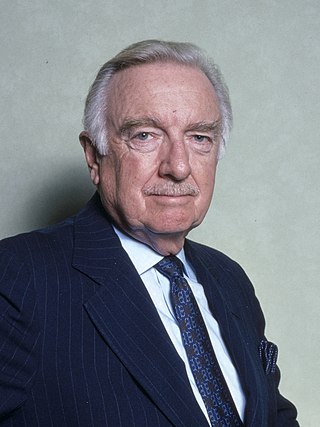
Walter Leland Cronkite Jr. was an American broadcast journalist who served as anchorman for the CBS Evening News for 19 years, from 1962 to 1981. During the 1960s and 1970s, he was often cited as "the most trusted man in America" after being so named in an opinion poll. Cronkite received numerous honors including two Peabody Awards, a George Polk Award, an Emmy Award and in 1981 was awarded the Presidential Medal of Freedom by President Jimmy Carter.
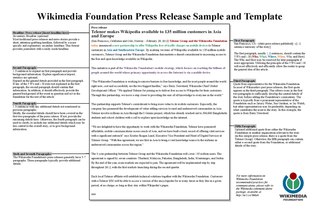
A press release is an official statement delivered to members of the news media for the purpose of providing information, creating an official statement, or making an announcement directed for public release. Press releases are also considered a primary source, meaning they are original informants for information. A press release is traditionally composed of nine structural elements, including a headline, dateline, introduction, body, and other components. Press releases are typically delivered to news media electronically, ready to use, and often subject to "do not use before" time, known as a news embargo.
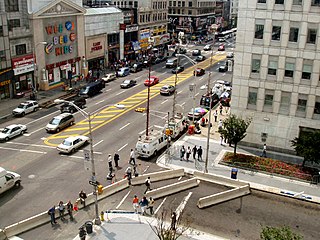
The news media or news industry are forms of mass media that focus on delivering news to the general public. These include news agencies, newspapers, news magazines, news channels etc.
The White House press corps is the group of journalists, correspondents, and members of the media usually assigned to the White House in Washington, D.C., to cover the president of the United States, White House events, and news briefings. Its offices are located in the West Wing.
In journalism, a source is a person, publication, or knowledge of other record or document that gives timely information. Outside journalism, sources are sometimes known as "news sources". Examples of sources include but are not limited to official records, publications or broadcasts, officials in government or business, organizations or corporations, witnesses of crime, accidents or other events, and people involved with or affected by a news event or issue.
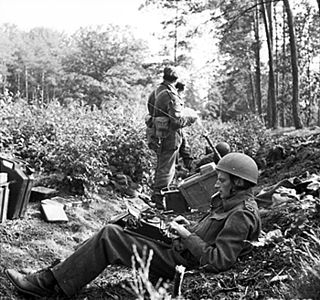
A war correspondent is a journalist who covers stories first-hand from a war zone.

Electronic news gathering (ENG) or electronic journalism (EJ) is usage of electronic video and audio technologies by reporters to gather and present news instead of using film cameras. The term was coined during the rise of videotape technology in the 1970s. ENG can involve anything from a single reporter with a single professional video camera, to an entire television crew taking a truck on location.
Breaking news, also called late-breaking news, a special report, special coverage, or a news flash, is a current issue that warrants the interruption of a scheduled broadcast in order to report its details. News broadcasters also use the term for continuing coverage of events of broad interest to viewers, attracting accusations of sensationalism.
Journalistic ethics and standards comprise principles of ethics and good practice applicable to journalists. This subset of media ethics is known as journalism's professional "code of ethics" and the "canons of journalism". The basic codes and canons commonly appear in statements by professional journalism associations and individual print, broadcast, and online news organizations.
A weekly newspaper is a general-news or current affairs publication that is issued once or twice a week in a wide variety broadsheet, magazine, and digital formats. Similarly, a biweekly newspaper is published once every two weeks. Weekly newspapers tend to have smaller circulations than daily newspapers, and often cover smaller territories, such as one or more smaller towns, a rural county, or a few neighborhoods in a large city. Frequently, weeklies cover local news and engage in community journalism.

In sports broadcasting, a sports commentator provides a real-time live commentary of a game or event, traditionally delivered in the present tense. Radio was the first medium for sports broadcasts, and radio commentators must describe all aspects of the action to listeners who cannot see it for themselves, that way there is an understanding of what is going on. In the case of televised sports coverage, commentators are presented as a voiceover, with images of the contest shown on viewers' screens and sounds of the action and spectators heard in the background. Television commentators are rarely shown on screen during an event, though some networks choose to feature their announcers on camera either before or after the contest or briefly during breaks in the action.

News broadcasting is the medium of broadcasting various news events and other information via television, radio, or the internet in the field of broadcast journalism. The content is usually either produced locally in a radio studio or television studio newsroom, or by a broadcast network. A news broadcast may include material such as sports coverage, weather forecasts, traffic reports, political commentary, expert opinions, editorial content, and other material that the broadcaster feels is relevant to their audience. An individual news program is typically reported in a series of individual stories that are presented by one or more anchors. A frequent inclusion is live or recorded interviews by field reporters.
Associated Press Television News, also referred to as AP Video and AP Television News, is a global video news agency operated by the Associated Press (AP).
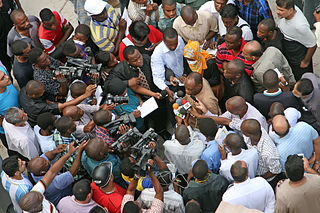
Broadcast journalism is the field of news and journals which are broadcast by electronic methods instead of the older methods, such as printed newspapers and posters. It works on radio, television and the World Wide Web. Such media disperse pictures, visual text and sounds.

A news bureau is an office for gathering or distributing news. Similar terms are used for specialized bureaus, often to indicate a geographic location or scope of coverage: a 'Tokyo bureau' refers to a given news operation's office in Tokyo; 'foreign bureau' is a generic term for a news office set up in a country other than the primary operations center; a ‘Washington bureau’ is an office, typically located in Washington, D.C., that covers news related to national politics in the United States. The person in charge of a news bureau is often called the bureau chief.
The term "journalism genres" refers to various journalism styles, fields or separate genres, in writing accounts of events.
The following outline is provided as an overview of and topical guide to journalism:
The Persian Gulf War, codenamed Operation Desert Storm and commonly referred to as the Gulf War, was a war waged by a United Nations-authorized coalition force from 34 nations led by the United States against Iraq in response to Iraq's invasion and annexation of Kuwait. Media coverage of the Gulf War was significant for many reasons including CNN's live reporting from a Baghdad hotel, alternative and international coverage, and the use of images.
This glossary of journalism is a list of definitions of terms and concepts used in journalism, its sub-disciplines, and related fields, including news reporting, publishing, broadcast journalism, and various types of journalistic media.







